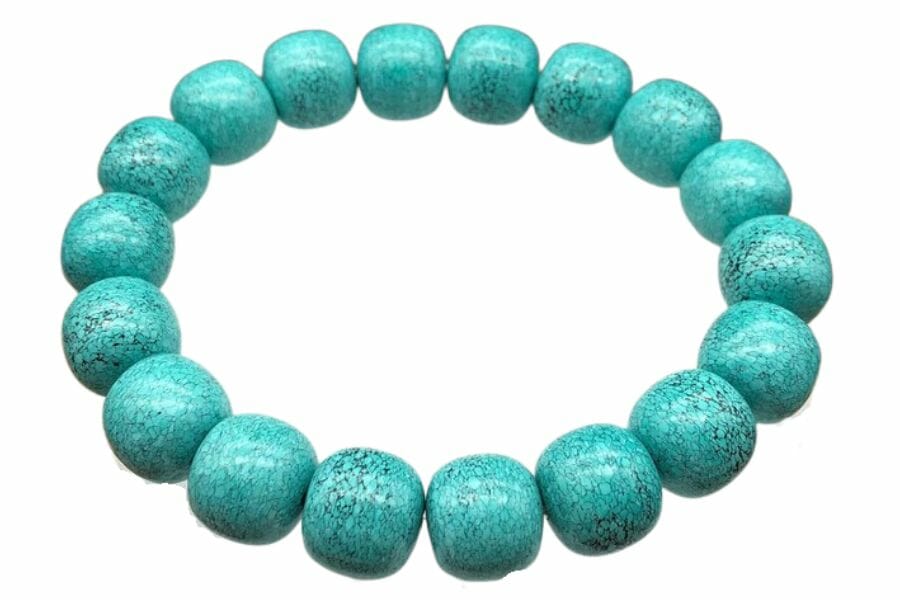Turquoise has been used in jewelry, artifacts, and decorations for thousands of years. Because of its popularity and value, there are many imitations on the market. With this comes the challenge of distinguishing genuine turquoise from imitations.
Knowing how to identify turquoise can save money and disappointment, and ensure you’re getting the quality you’re paying for. From understanding the gem’s natural characteristics to spotting common signs of imitations, you’ll know how to identify the real thing.
We’ll delve deep into the differences between the genuine gem and its imitations, offering clear insights and tips to tell them apart. Whether you’re buying a gift, adding to a collection, or simply curious, the knowledge here will be invaluable.
Understanding Natural Turquoise and Why Fakes are Common
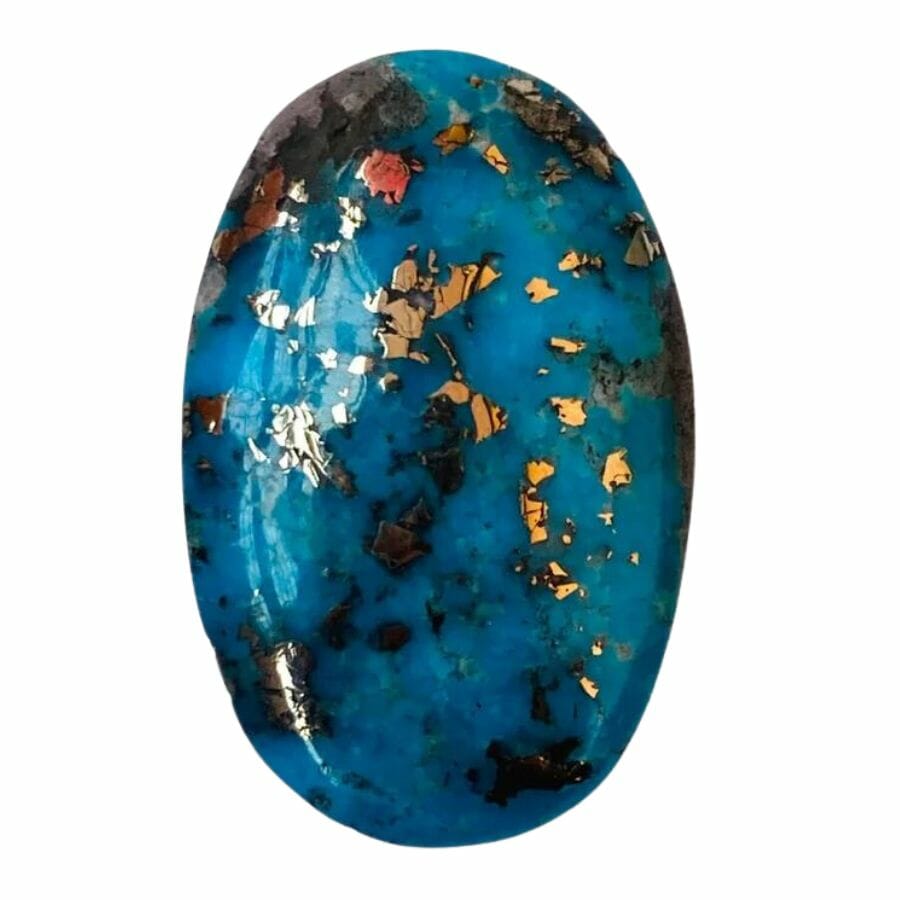
Turquoise forms over millions of years when water moves through rocks that contain specific minerals like copper and aluminum. As the water moves, it causes a reaction between these minerals, leading to the creation of turquoise.
The vibrant blue-green color of turquoise comes from the presence of copper, while shades of green are due to the iron content.
One of turquoise’s unique properties is its matrix, which are the veins or patterns often seen running through the stone. These patterns come from the host rocks and can vary widely, making each piece of turquoise distinct.
Its beauty, combined with its limited supply, makes turquoise valuable. Authentic pieces, especially those with a rare or unique matrix, can be sought after and command high prices.
Why you’re seeing more fake turquoise these days
As the demand for turquoise grows, the supply of real turquoise becomes limited because it takes nature millions of years to make it. To meet the high demand and make more money, some sellers have started making fake turquoise.
These imitations can be produced quickly and in large amounts, and they cost less to make than finding and mining real turquoise. So, many fake pieces are sold to unsuspecting buyers.
How To Identify Real Turquoise
Many people around the world value turquoise for its beauty and versatility. It’s a popular choice for jewelry, such as necklaces, rings, and bracelets.
Beyond jewelry, turquoise is also used in larger decorative items and has cultural significance in many Native American traditions.
Knowing how to identify your rock is essential to ensure you’re getting the real deal and not an imitation. Fortunately, there are techniques and tips that can help you distinguish authentic turquoise from counterfeits.
Armed with this knowledge, buyers and collectors can make informed decisions and appreciate the true value of their pieces.
Appearance
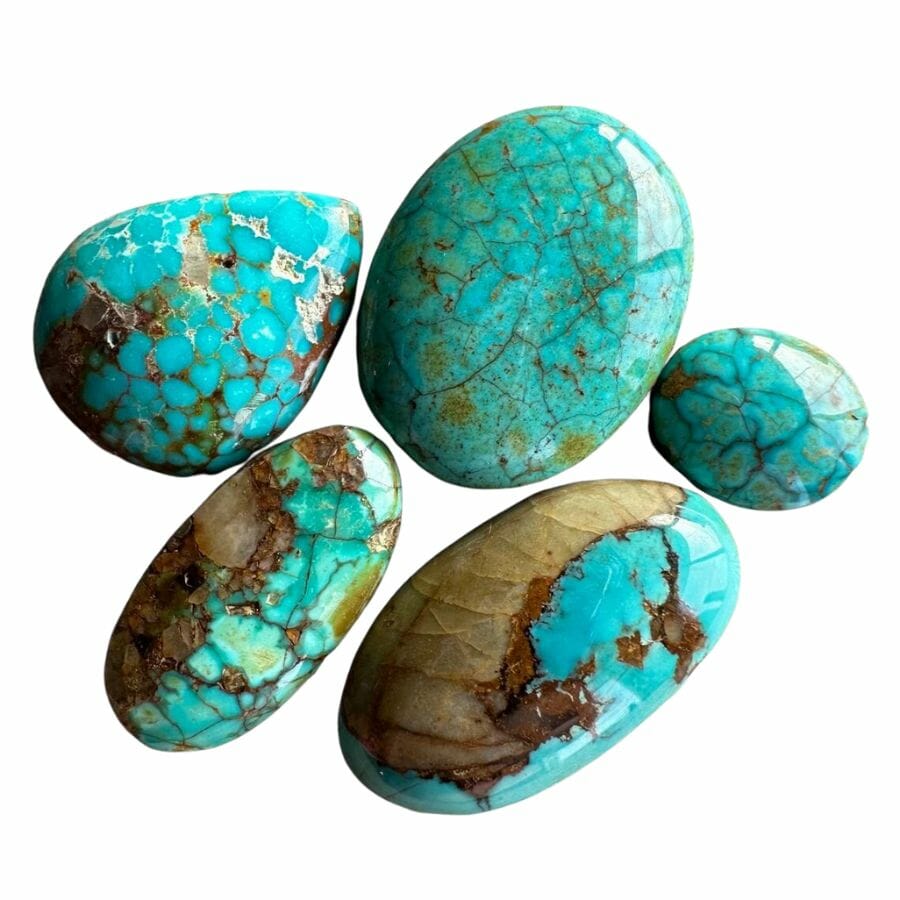
Natural turquoise is unique and often comes with small imperfections. One key way to check its authenticity is by examining its appearance closely. It’s common to find a matrix, which are the veins or patterns you see in the stone.
These patterns come from the host rocks where the turquoise formed. Every piece of turquoise has its own unique matrix, making each stone special.
Another clue is the color. Genuine turquoise can range from blue to green. If you find a piece that looks too perfect or has an unusually bright and uniform color, it might be a sign that it’s not genuine.
Weight
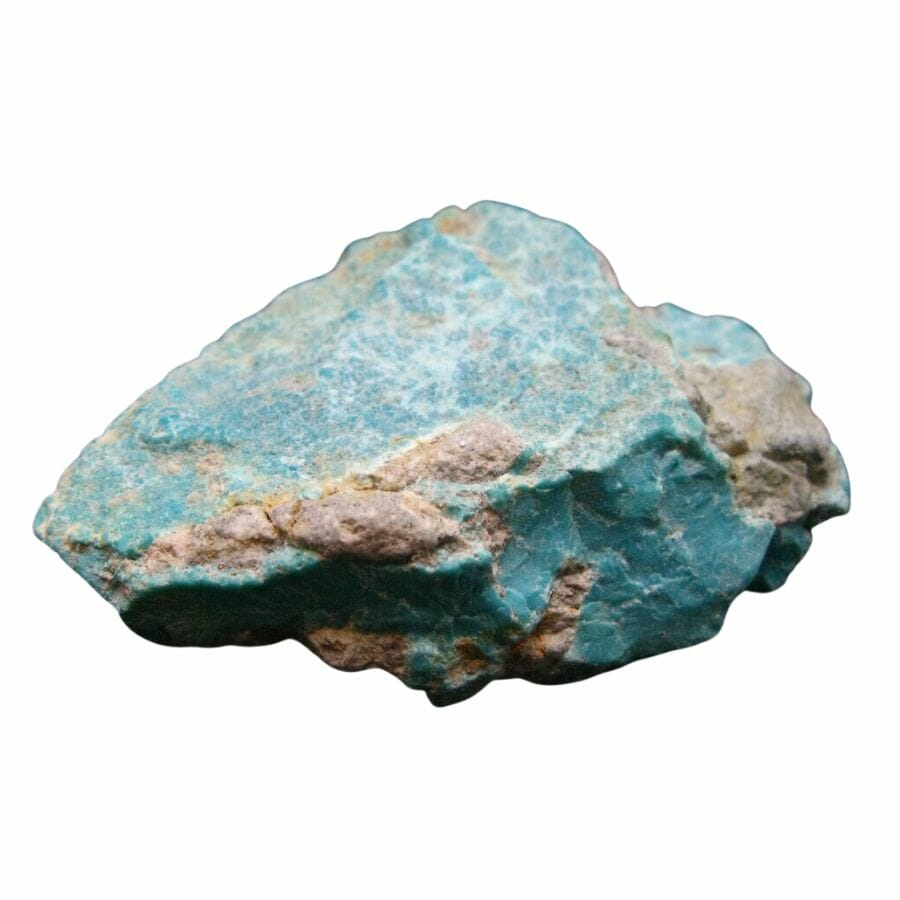
When determining the authenticity of turquoise, weight can be a telling factor. Genuine turquoise is a dense mineral, which means it has a certain heft to it. If you pick up a piece, it should feel solid and heavier than you might expect for its size.
On the other hand, many fake versions of turquoise are made using lightweight materials like plastic. These imitations will often feel lighter and might not have the solid feel of real turquoise.
Holding the stone in your hand and gauging its weight can give you an immediate sense of its authenticity. So, trust your touch and sense of weight when examining a piece, as it can be a straightforward way to spot fakes.
Streak Test
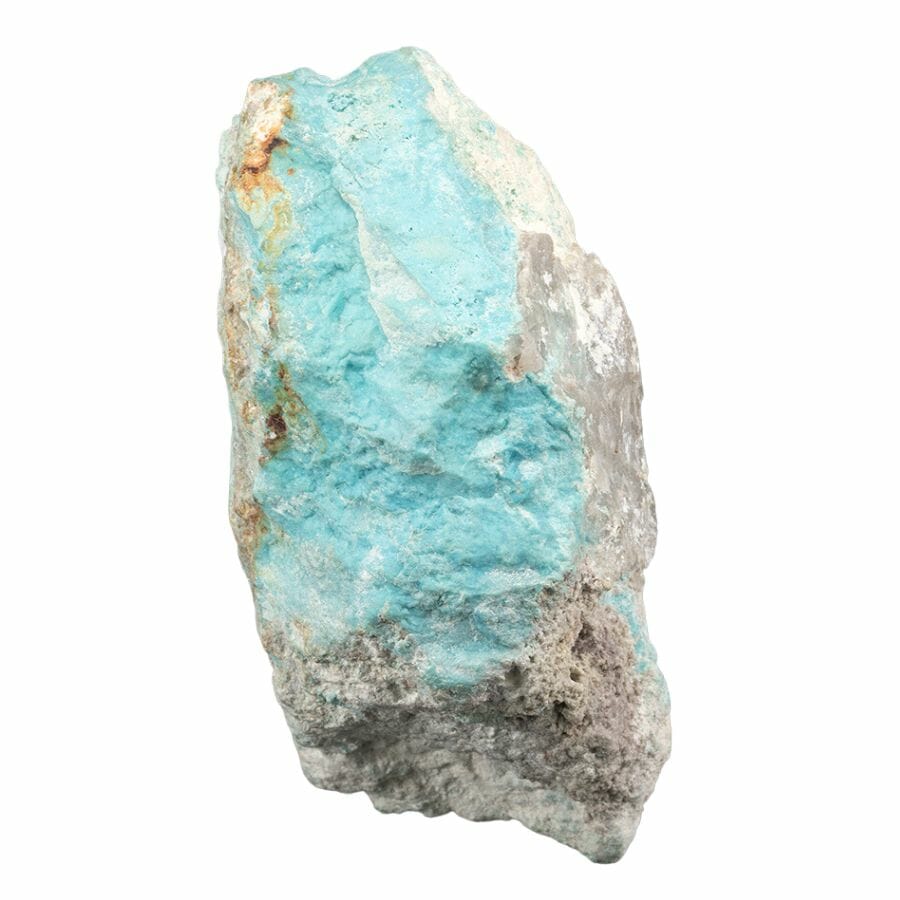
If you’re wondering how to tell if turquoise is real, you can use a streak test. This simple test can offer quick insights.
When you rub genuine turquoise against an unglazed porcelain surface, it leaves behind a streak. The color of this streak is typically white, but it can also have greenish or bluish hints.
Imitation turquoise or other minerals might leave a different colored streak or no streak at all.
So, if you come across a piece of turquoise and are curious about its authenticity, try the streak test. Using an unglazed porcelain tile, gently rub the stone against it and observe the color left behind.
Absorption Test
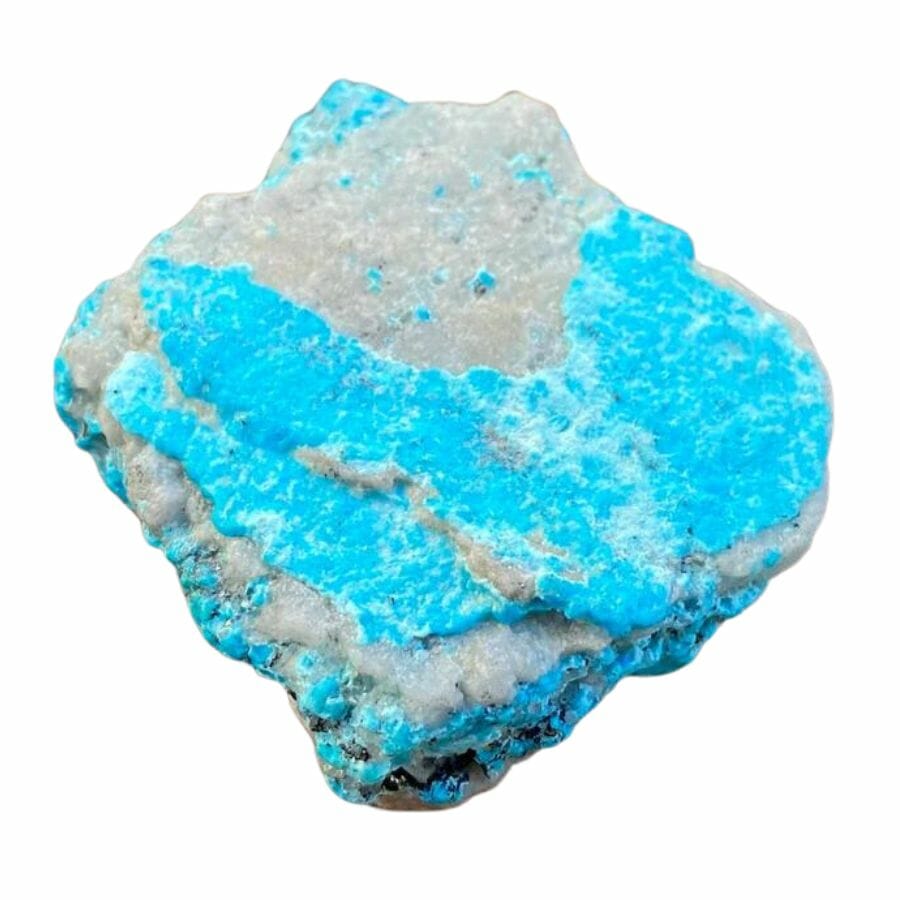
Genuine turquoise has the ability to absorb water due to its porous nature. This unique property can be a helpful indicator of its authenticity. If you place a drop of water on the surface of a turquoise stone, the water should gradually be absorbed if it’s real.
After a while, the water droplet will disappear into the stone.
On the other hand, fake turquoise, especially those made of materials like plastic or resin, won’t show this behavior. Instead, the water will remain on the surface, forming a bead without sinking in.
Testing the absorption capacity is a straightforward and non-invasive way to determine the legitimacy of a turquoise piece, ensuring you have the real deal.
Matrix Examination
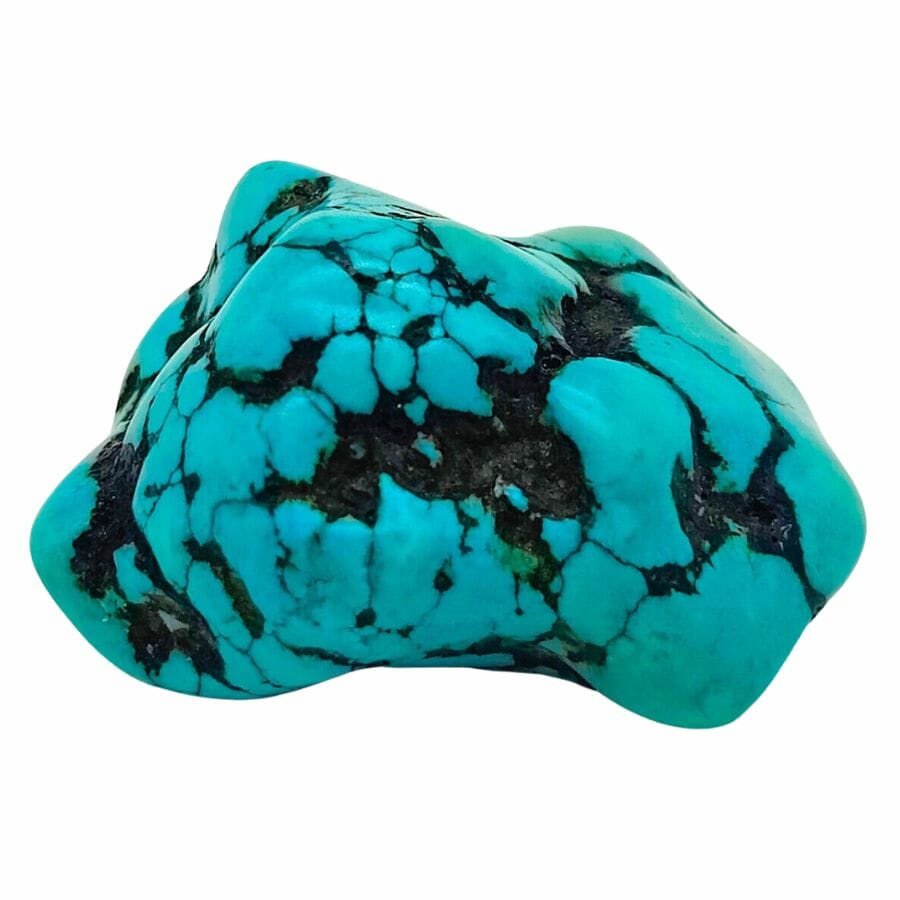
The matrix of turquoise is the web-like pattern or veins you see running through the stone. In genuine turquoise, this matrix is unique to each piece, showcasing a design that is irregular and random. Each piece tells its own story through its matrix.
On the other hand, fake turquoise, particularly those that are reconstituted or artificially made, often has a matrix that looks too perfect. Its pattern may be too consistent or uniform.
By closely examining the matrix, and noting its randomness and individuality, one can get valuable insights into the authenticity of the turquoise. Recognizing these patterns is a helpful step in ensuring you’re acquiring a genuine piece.
The Different Types Of Fake Turquoise And What They Look Like
Turquoise counterfeits are crafted to resemble the real gem, but they come from various materials and methods. Some are made by dyeing other minerals, while others are a blend of resins and powdered stone.
As buyers or collectors, it’s essential to recognize these imitations, ensuring the turquoise’s authenticity. This discussion will delve into the common types of fake turquoise, detailing their appearance and the techniques used to create them.
By understanding these fakes, you can make informed decisions and appreciate the true value of turquoise.
Dyed Howlite or Magnesite
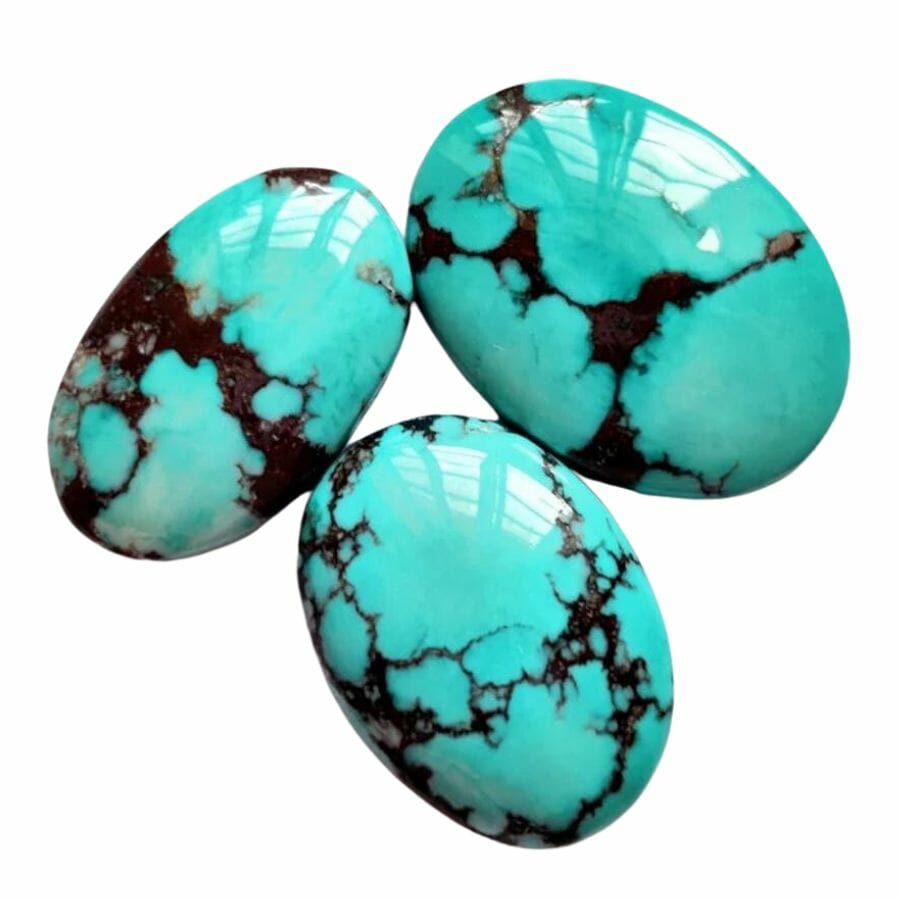
Howlite and magnesite are naturally occurring white minerals. Because of their porous nature, they can absorb dyes very well.
To create a turquoise look-alike, these minerals are soaked in a blue or green dye. The dye penetrates the stone, changing its color to closely resemble the beautiful blue-green shade of genuine turquoise.
Adding to the deception, both howlite and magnesite have a veiny, matrix-like appearance, which is a characteristic feature of turquoise. Once dyed, these minerals can look strikingly similar to real turquoise, especially to the untrained eye.
Sellers then offer these dyed stones as turquoise, often at a fraction of the price of the real gem. This makes it crucial for buyers to be knowledgeable, so they don’t mistake these common substitutes for the real thing.
How you can identify howlite or magnesite being sold as real turquoise
Color uniformity
When assessing a stone to determine if it’s genuine turquoise or dyed howlite or magnesite, closely examine its color patterns.
Dyed howlite or magnesite usually displays a color that is evenly spread, without much variation, giving it an almost flawless appearance.
On the other hand, genuine turquoise possesses a richness in its hues, showcasing subtle shifts in shade and minor color inconsistencies. These natural variations in genuine turquoise add to its unique charm and make it stand apart from imitations.
Brightness
The colors in dyed stones can stand out as overly bright and vibrant, lacking the natural depth and richness of genuine turquoise. In contrast, real turquoise presents a more muted spectrum of blue-green shades.
This subdued and varied tone in authentic turquoise is a clear distinction from the artificial brilliance of dyed imitations.
Matrix patterns
Howlite showcases gray, web-like veins that spread across the stone. Magnesite displays streaky brown lines that can be sporadic and varied. Real turquoise, however, possesses a unique matrix pattern that’s more random and intertwined.
Recognizing these matrix differences can be a reliable way to differentiate between true turquoise and its imitations.
Plastic or Resin Turquoise
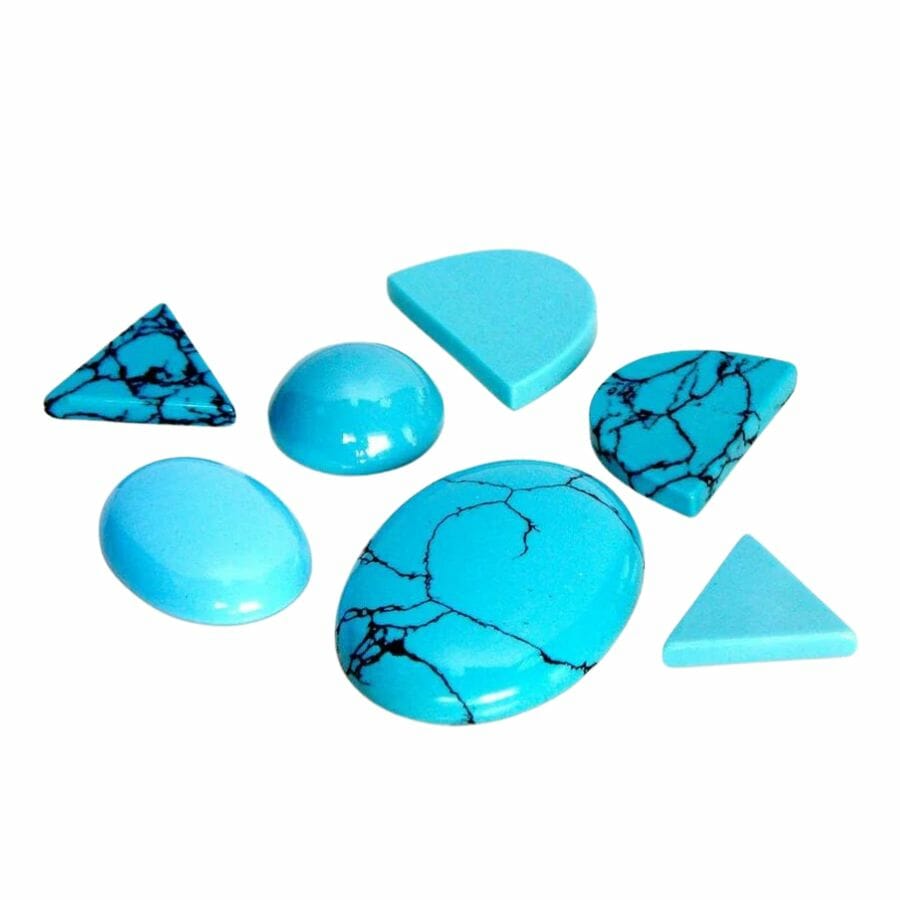
To create these turquoise imitations, manufacturers melt plastic or mix resin components, then add dyes to achieve the desired blue-green hue of turquoise.
Some even mix in ground-up turquoise or other minerals, aiming to give the imitation a feel that’s closer to the real thing. Once the mixture is ready, it’s poured into molds to shape beads, cabochons, or other desired forms.
After it hardens, the result is a piece that looks similar to turquoise but lacks the natural qualities and value of genuine turquoise. Buyers should be cautious, as these plastic or resin versions are often sold at a fraction of the price of real turquoise.
How you can identify plastic or resin turquoise being sold as real turquoise
Temperature
Genuine turquoise has a unique property where it remains cool to the touch, even when it’s been in a warm setting. When you pick up real turquoise, you’ll notice this cool sensation on your skin. In contrast, pieces made of plastic or resin react differently.
Resin turquoise pieces adapt to their surroundings faster, feeling more like room temperature. If you hold them for a while, they’ll warm up noticeably. This difference in temperature response can help determine the authenticity of a turquoise piece.
Weight
One key characteristic that differentiates real turquoise from its plastic or resin imitations is its weight. Authentic turquoise is dense, giving it a weighty feel in your hand. When you pick up a genuine piece, you can sense its solidity and heft.
In contrast, plastic and resin substitutes are significantly lighter in comparison. When handling a piece that feels unusually lightweight, it’s a strong indicator that the turquoise might be an imitation made from plastic or resin materials.
Hot needle test
The hot needle test is a straightforward method to distinguish real turquoise from plastic or resin imitations. By heating a needle and gently pressing it against the surface of the piece, you can observe its reaction.
If it’s plastic or resin, the hot needle will cause it to melt or leave an indent. On the other hand, genuine turquoise, being a stone, will remain unaffected. This resistance to melting is a clear sign of the turquoise’s authenticity.
Reconstituted Turquoise
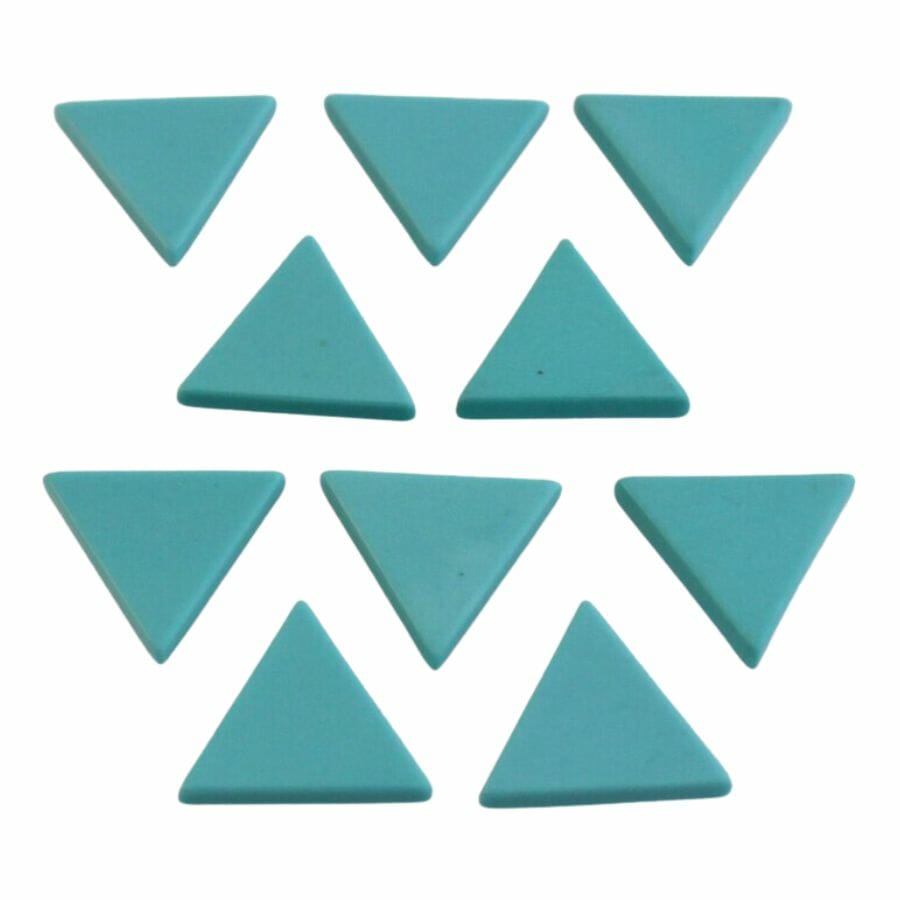
Small bits or powder of real turquoise, often leftover scraps from cutting or shaping, are collected to make reconstituted turquoise.
This powdered turquoise is then mixed with a resin. This mixture is poured into molds to create beads, cabochons, or other shapes. Once hardened, the result looks similar to solid turquoise.
While reconstituted turquoise does contain real turquoise particles, the presence of resin and the reshaping process means it isn’t pure. Because of this, reconstituted turquoise is usually less expensive than genuine turquoise pieces.
How you can identify reconstituted turquoise being sold as real turquoise
Texture and appearance
Genuine turquoise displays a range of natural blemishes, uneven tones, and unique patterns, telling the story of its formation in the earth. In contrast, reconstituted turquoise has a more uniform look.
This mixture creates a smoother surface that often lacks the natural quirks and variances found in pure turquoise. Observing these differences in texture and appearance can help determine the stone’s authenticity.
Matrix patterns
Matrix patterns can be a telltale sign when distinguishing real turquoise from its reconstituted counterpart. Genuine turquoise showcases a matrix that is varied and irregular, with each piece having its distinct, naturally occurring design.
On the other hand, reconstituted turquoise often displays patterns that are repetitive or too uniform, which can look artificially created.
Translucency
When you place a piece of reconstituted turquoise against a light source, it might allow some light to pass through because of its mixed composition. The stone thus has a slightly translucent appearance.
In contrast, genuine turquoise, being a dense and natural stone, does not let light through. It typically maintains its opaque character. This difference in translucency can help confirm the authenticity of the stone.
Block Turquoise
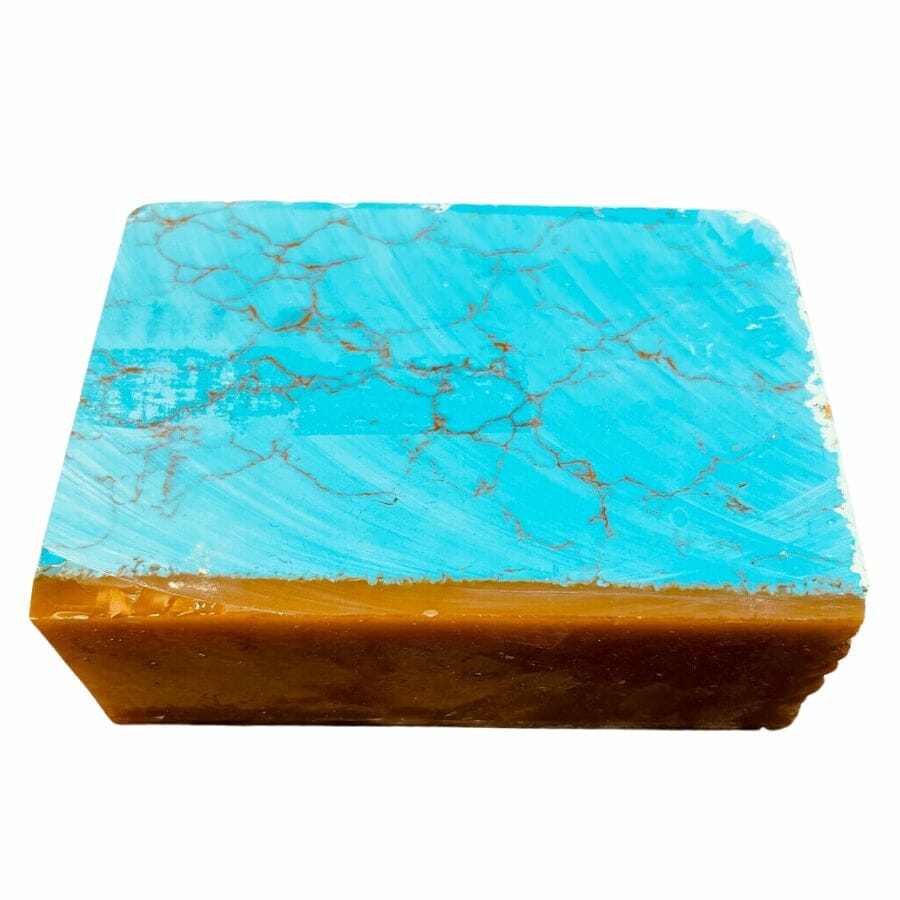
To create block turquoise, manufacturers mix plastics with different dyes to capture the blue-green hue characteristic of turquoise.
Sometimes, they even add powdered stone to this mixture to give it a more textured look and feel, although this stone isn’t always real turquoise.
Once the mix is ready, it’s poured into molds that form large blocks. After these blocks harden, they are cut and shaped into various forms, such as beads or cabochons, to mimic genuine turquoise pieces.
How you can identify block turquoise being sold as real turquoise
Consistency in color
Genuine turquoise boasts a range of shades, from deep blues to green hues. There are often subtle shifts in color across a single piece due to minerals present during its formation.
Block turquoise displays an even and consistent shade. This uniformity, which lacks the rich, varied tones of natural turquoise, can help buyers recognize and differentiate the imitation from the real gemstone.
Perfect texture
Authentic turquoise has a unique feel to it, often showcasing slight imperfections, pits, or a roughness linked to its natural formation process.
In contrast, block turquoise, crafted from plastic mixtures, frequently presents a more polished surface.
This overly smooth and uniform texture, devoid of the natural marks found in genuine turquoise, can be a clear indication that the piece might be a man-made imitation.
Feel and temperature
One notable difference between genuine turquoise and block turquoise is how they respond to body temperature. When you hold a piece of genuine turquoise, it retains a cool feeling, even after some time in contact with your skin.
Block turquoise, on the other hand, warms up quickly due to its plastic composition. So, if a turquoise piece quickly becomes warm to the touch, it’s a strong indication that it might be the block or imitation variety.
Composite Turquoise
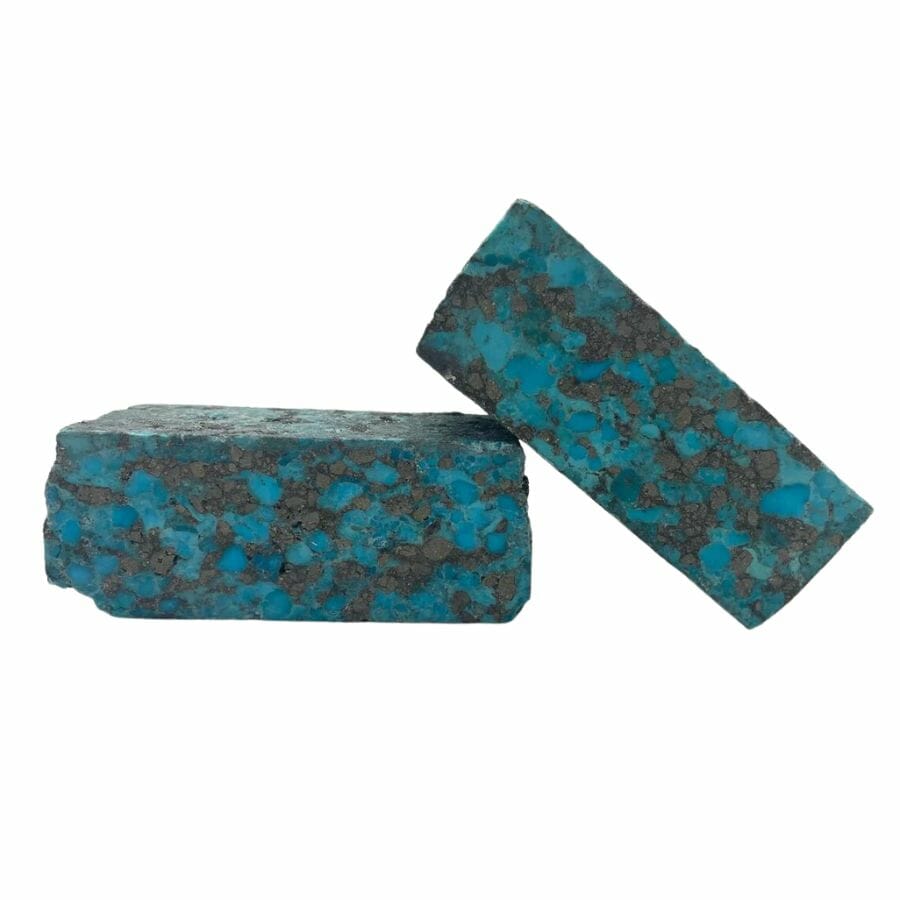
Composite turquoise is made by taking small pieces of genuine turquoise and sticking them together to form a bigger piece. To do this, manufacturers use a special kind of glue that binds these bits into a single item.
This method allows them to use up all the small fragments that might otherwise go to waste. The result is a piece that, while made of real turquoise bits, doesn’t hold the same value as a pure, untouched piece.
People should be aware that, even though it’s real turquoise, the composite type isn’t as prized because of the added glue and the pieced-together nature.
How you can identify composite turquoise being sold as real turquoise
Visible glue or clear layers
One key sign that you’re dealing with a composite and not a solid piece is the presence of visible glue. If you inspect closely, you can often spot clear or colored adhesive layers that bind the turquoise fragments together.
These glue layers are not found in natural, solid turquoise and can be a clear giveaway that you’re looking at a composite material.
Mismatched pieces
Genuine turquoise is naturally formed, exhibiting smooth transitions in its color and patterns. In contrast, composite types might show abrupt color changes or grains that seem out of place.
These mismatched sections can be telltale signs that the turquoise has been assembled from different sources. Always inspect closely for these clues when evaluating authenticity.
How to Tell if Turquoise is Real vs Fake
From texture to temperature, various methods can help determine the authenticity of gemstones like turquoise. Knowing these differences ensures appreciation of the stone’s true value and beauty.
How to identify fake turquoise when it’s cut or polished
While turquoise counterfeits can sometimes look convincing, there are distinct signs that set apart genuine turquoise. When turquoise is polished, its unique characteristics become even more pronounced, offering clues about its legitimacy.
Translucency test
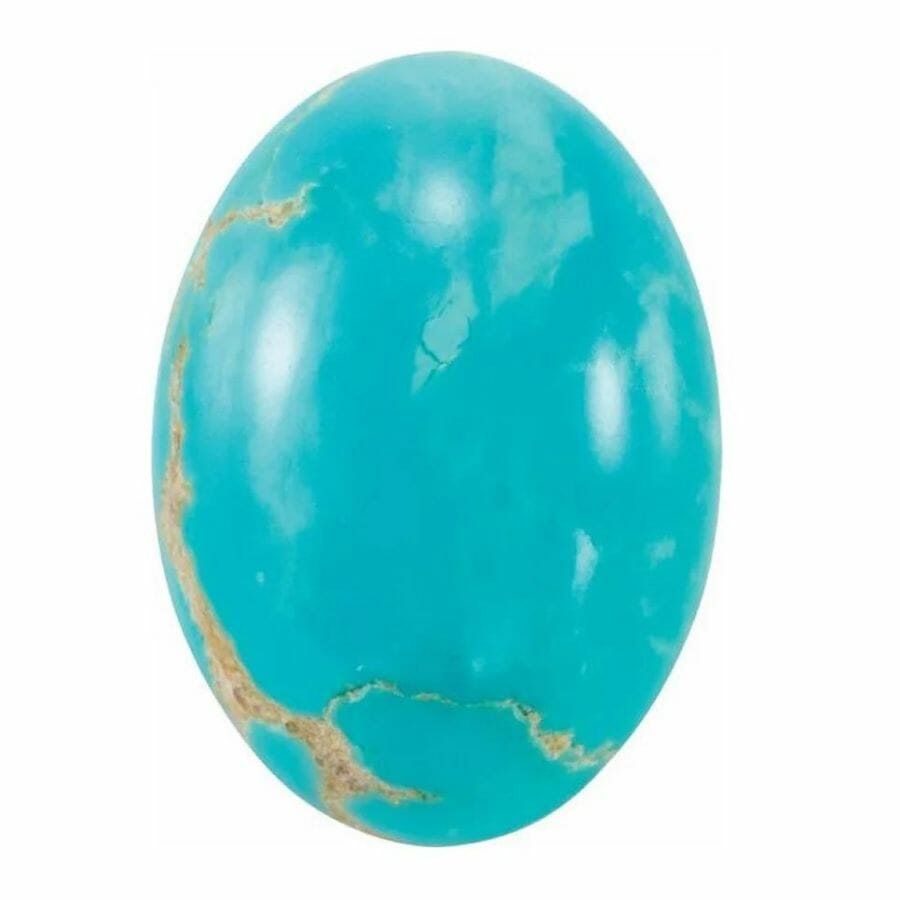
Translucency is the amount of light that can pass through a substance. When it comes to testing turquoise that’s cut and polished, this property can be a big clue about its authenticity.
Genuine turquoise is mostly opaque, meaning very little to no light shines through it. On the other hand, some fake turquoise pieces allow more light to pass through, appearing slightly translucent or even see-through in certain cases.
So, if you’re trying to figure out if a piece of turquoise is real or not, simply hold it up to a light source. If a lot of light shines through, it might not be the real deal. Always remember this tip when checking your turquoise.
Temperature
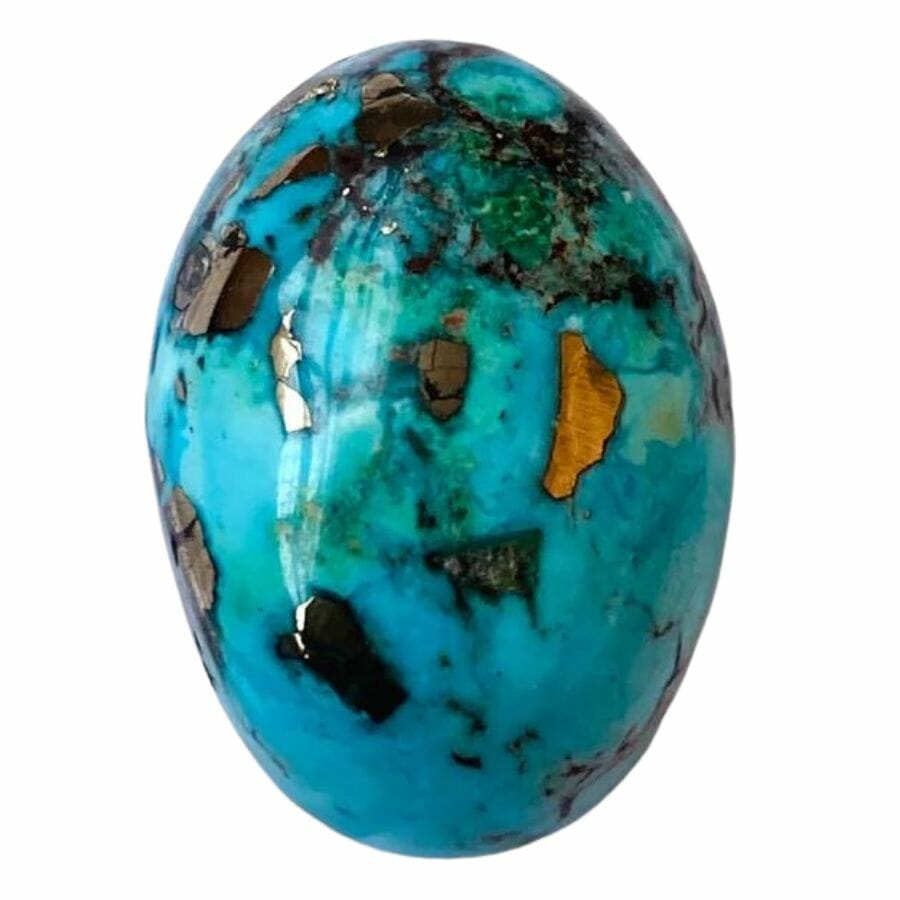
When you pick up a piece of genuine turquoise, one of the first things you’ll notice is how it feels to the touch. Authentic turquoise has a natural coolness. Even if it’s been in a warm room or out in the sun, it starts off feeling cool against your skin.
After holding it for a while, it will slowly warm up, but it takes time. Fake turquoise made from plastic or resin behaves differently. These materials quickly match the temperature of their surroundings, so they won’t have that same initial cool feeling.
Sound test
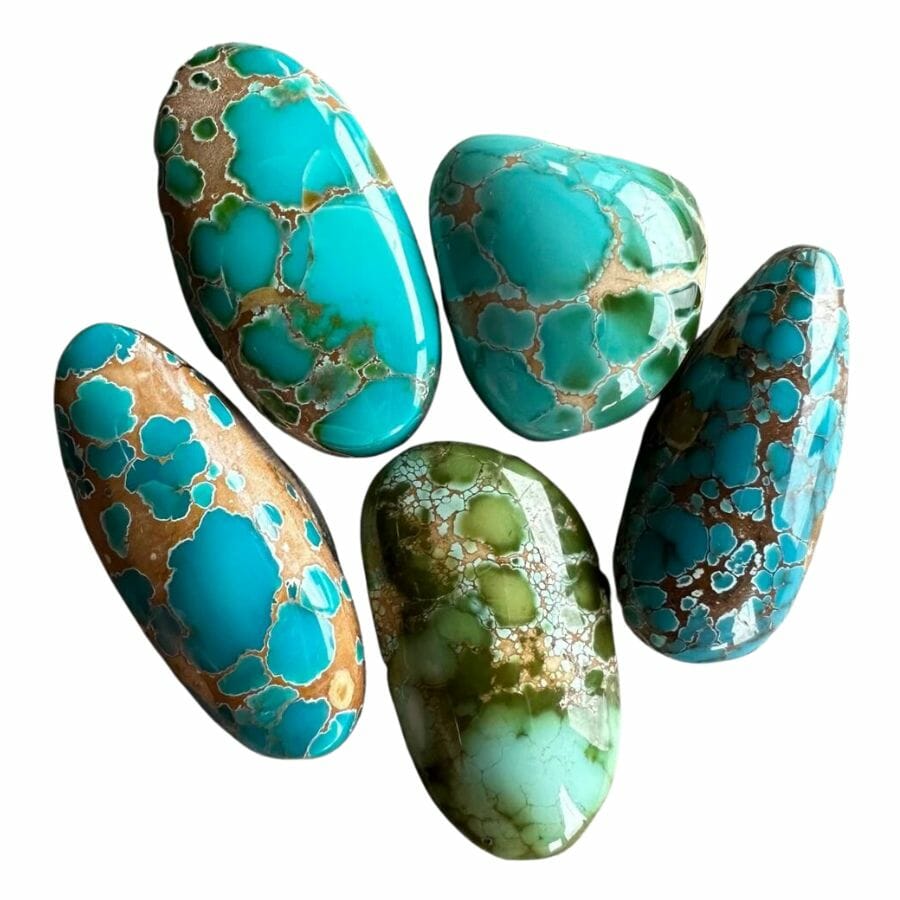
Sound can be a telling sign when trying to determine if a piece is genuine turquoise or a fake. Real turquoise has a unique quality that’s hard to replicate.
If you have two pieces, gently tap them together. Genuine turquoise has a density that creates a clear, almost ringing sound. It’s a sound that’s distinct and higher in pitch.
On the other hand, fakes made from plastic or resin have a different density. When tapped, they make a more muted, dull sound. Just remember to tap gently to avoid damaging the stones.
How to Identify Fake Turquoise When It’s Raw
Identifying genuine turquoise in its raw form can be a bit challenging, especially with the rise of convincing imitations in the market.
Here are the various methods and tips that can help in determining the authenticity of raw turquoise, ensuring you can confidently differentiate between the real deal and the imposters.
Hardness test
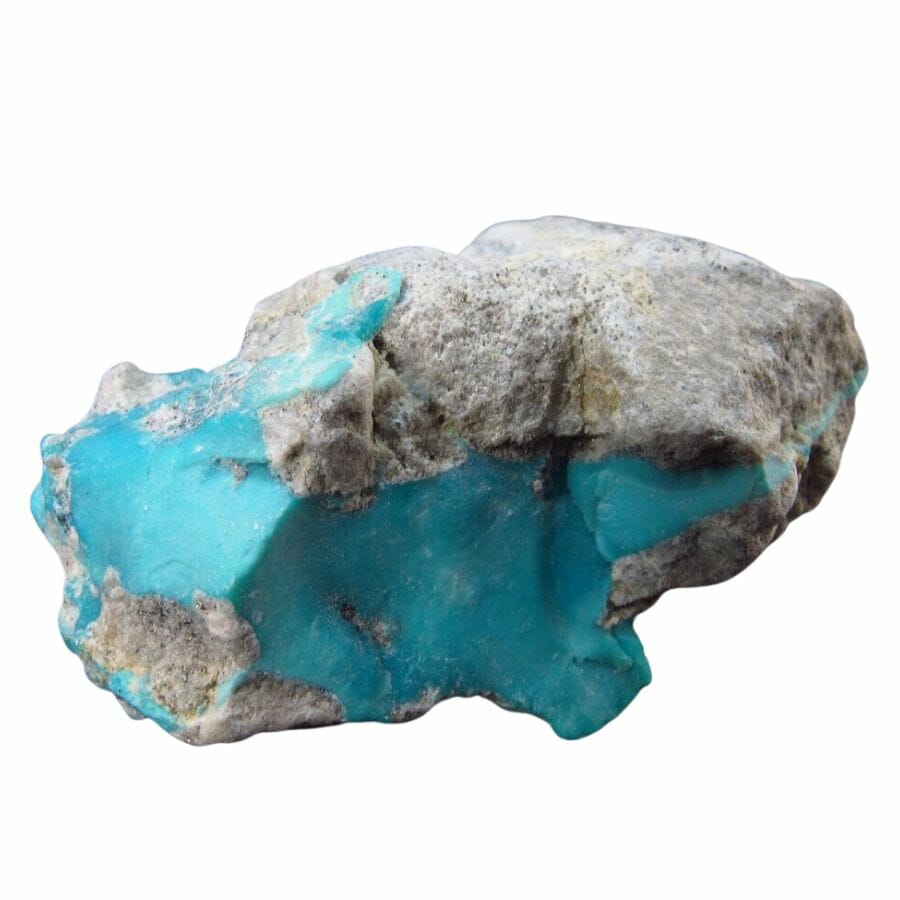
Raw turquoise is a bit softer than many might think. On the Mohs hardness scale, which is a tool that tells how hard minerals are, turquoise scores between 5 and 6. This means it’s not as hard as, say, quartz or diamond.
One way to test a stone’s hardness is by trying to scratch it. If the stone can be scratched by a copper penny or if it can scratch glass easily, it might not be real turquoise.
Some pieces made to look like turquoise are made from softer or harder materials. For example, howlite and magnesite are much softer than turquoise and have a hardness of around 3.5.
Hot needle test
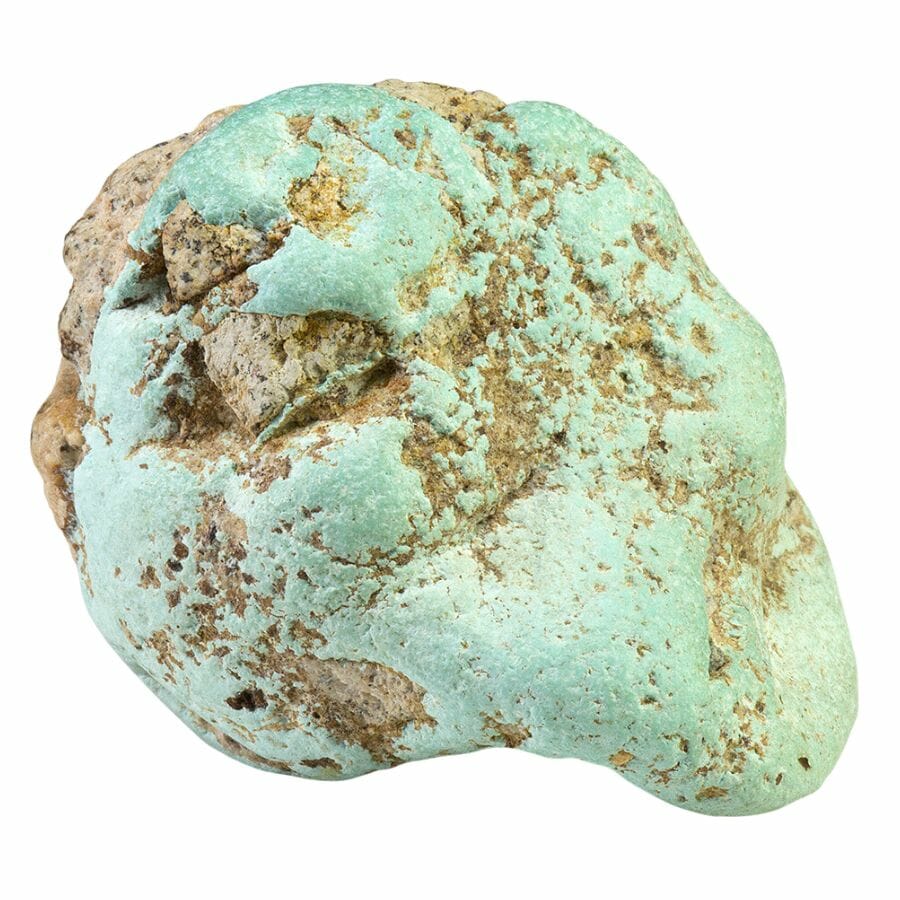
When trying to figure out real vs fake turquoise, the hot needle test can be a helpful tool. To do this test, you heat up a needle until it’s red hot. Then, you gently touch it to the stone.
If the stone is plastic or resin trying to look like turquoise, the needle might melt it a bit or you could smell burning plastic. Genuine turquoise won’t melt and will remain unchanged.
But be very careful with this test! Even though real turquoise won’t melt, the hot needle could leave a mark or scar on it. Always test on a small, less noticeable spot.
Stability in solvents
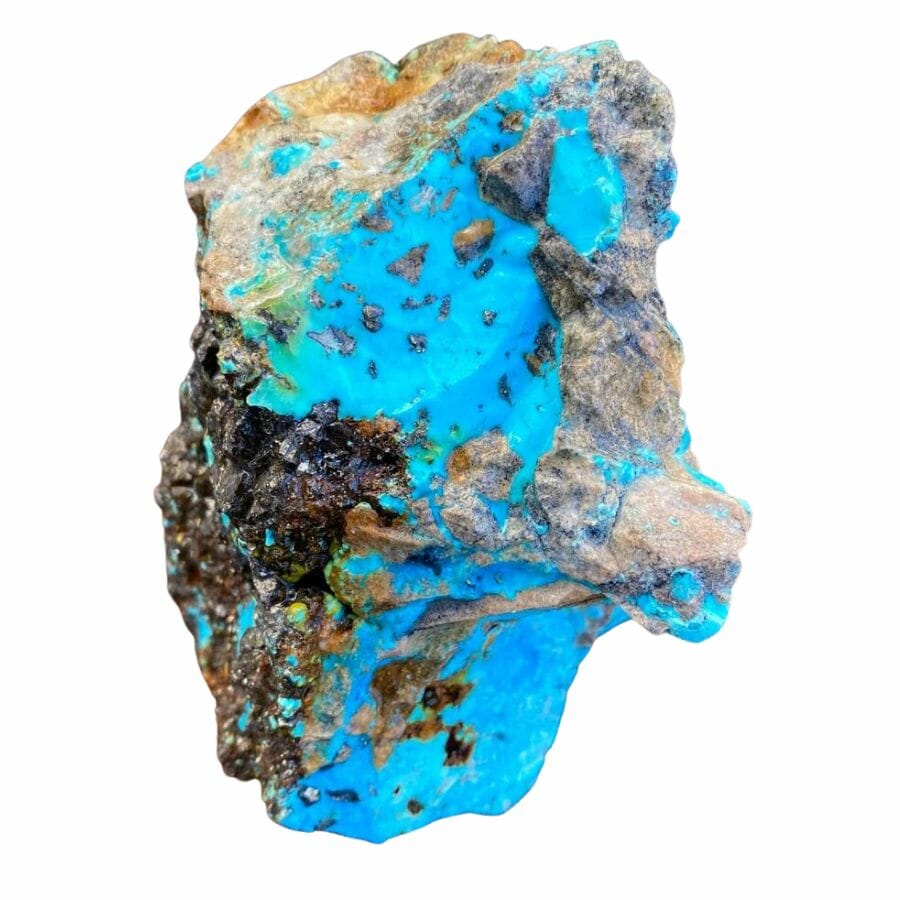
For this test, you’d dab a little acetone, which is found in nail polish remover, on a small part of the stone. If the stone’s color comes off or fades, it might be a sign that it’s not real turquoise.
However, there’s a catch. Using acetone can also harm genuine turquoise, leaving marks or changing its color. So, always be super careful and test on a hidden spot if you choose to try this method.
Remember, there’s always a risk when using chemicals on stones.

